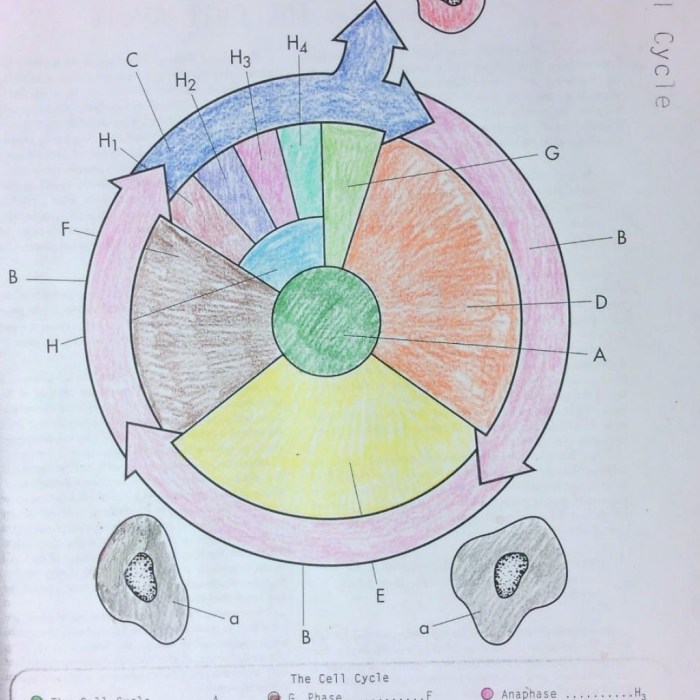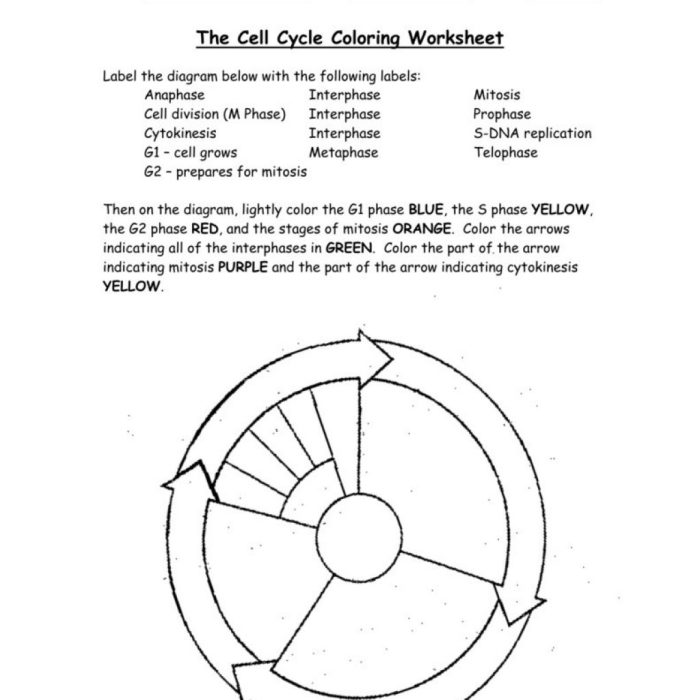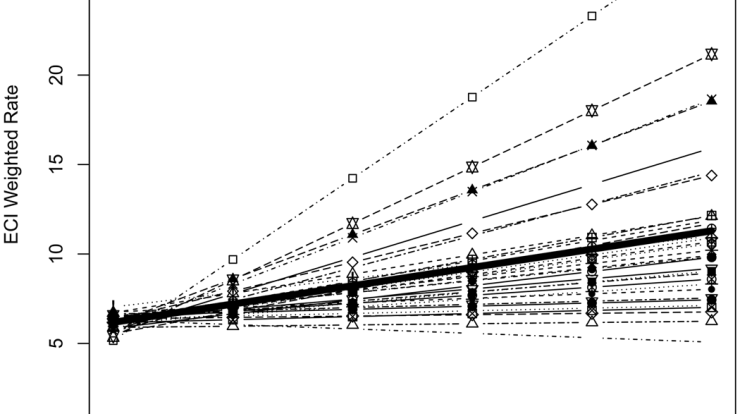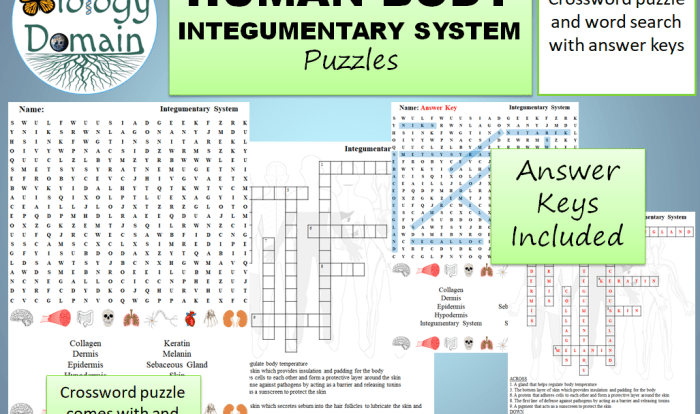The Cell Cycle Coloring Worksheet Answer Sheet is an invaluable resource for students seeking to deepen their comprehension of the intricate process of cell division. This comprehensive guide provides a detailed overview of the cell cycle, its stages, and the factors that regulate it, making it an essential tool for mastering this fundamental biological concept.
This meticulously crafted worksheet empowers learners to actively engage with the material through interactive coloring exercises. By assigning specific colors to different cell cycle stages, students can visualize and reinforce their understanding of the dynamic changes that occur throughout the cell cycle.
Cell Cycle Overview
The cell cycle is the process by which cells grow and divide. It is divided into four stages: G1, S, G2, and M. During the G1 phase, the cell grows and prepares for DNA replication. During the S phase, the cell’s DNA is replicated.
During the G2 phase, the cell checks for errors in DNA replication and prepares for mitosis. During the M phase, the cell divides into two new cells.
The cell cycle is essential for the growth and development of organisms. It allows cells to replace themselves and to repair damaged tissue. The cell cycle is also regulated by a number of factors, including growth factors, hormones, and cell cycle checkpoints.
Cell Cycle Coloring Worksheet
The cell cycle coloring worksheet is a valuable tool for understanding the cell cycle. The worksheet provides a visual representation of the cell cycle, and it allows students to color in the different stages of the cell cycle. This helps students to learn about the different stages of the cell cycle and how they are related to each other.
To use the cell cycle coloring worksheet, students should first read the instructions on the worksheet. Then, they should color in the different stages of the cell cycle according to the instructions. Once the worksheet is complete, students should review the information on the worksheet to reinforce their understanding of the cell cycle.
Answer Sheet

The answer sheet for the cell cycle coloring worksheet provides detailed explanations for each answer. The answer sheet is a valuable resource for students who are learning about the cell cycle. It can help students to understand the different stages of the cell cycle and how they are related to each other.
The answer sheet is divided into four sections, one for each stage of the cell cycle. Each section provides a brief overview of the stage, as well as a detailed explanation of each answer. The answer sheet also includes a number of helpful diagrams and illustrations.
Cell Cycle Terminology
The cell cycle is a complex process, and it involves a number of different terms. Some of the most important cell cycle terms include:
- Cell cycle:The process by which cells grow and divide.
- G1 phase:The first phase of the cell cycle, during which the cell grows and prepares for DNA replication.
- S phase:The second phase of the cell cycle, during which the cell’s DNA is replicated.
- G2 phase:The third phase of the cell cycle, during which the cell checks for errors in DNA replication and prepares for mitosis.
- M phase:The fourth phase of the cell cycle, during which the cell divides into two new cells.
- Mitosis:The process by which a cell divides into two new cells.
- Cytokinesis:The process by which the cytoplasm of a cell divides into two new cells.
Cell Cycle Regulation
The cell cycle is regulated by a number of factors, including:
- Growth factors:Proteins that stimulate cell growth and division.
- Hormones:Chemical messengers that regulate cell growth and division.
- Cell cycle checkpoints:Control points in the cell cycle that ensure that the cell is ready to progress to the next stage.
Cell cycle regulation is essential for the proper growth and development of organisms. It ensures that cells only divide when they are ready and that they do not divide too quickly or too slowly.
Cell Cycle Disorders
Cell cycle disorders are a group of diseases that affect the cell cycle. These disorders can cause cells to divide too quickly or too slowly, or they can cause cells to stop dividing altogether. Cell cycle disorders can lead to a number of health problems, including cancer, birth defects, and infertility.
Some of the most common cell cycle disorders include:
- Cancer:A disease in which cells divide uncontrollably.
- Birth defects:Defects that occur when cells do not divide properly during embryonic development.
- Infertility:The inability to conceive a child due to problems with cell division.
Applications of Cell Cycle Analysis: The Cell Cycle Coloring Worksheet Answer Sheet
Cell cycle analysis is a technique used to measure the cell cycle of cells. This technique can be used to diagnose a number of cell cycle disorders, including cancer. Cell cycle analysis can also be used to study the effects of drugs and other agents on the cell cycle.
Cell cycle analysis is a valuable tool for research and clinical settings. It can be used to diagnose and treat a number of cell cycle disorders, and it can also be used to study the effects of drugs and other agents on the cell cycle.
Interactive Resources

There are a number of interactive resources available to help you learn more about the cell cycle. These resources include:
- Simulations:Simulations that allow you to explore the cell cycle in a virtual environment.
- Animations:Animations that show the cell cycle in action.
- Quizzes:Quizzes that test your knowledge of the cell cycle.
These interactive resources can help you to learn more about the cell cycle in a fun and engaging way.
Essential Questionnaire
What is the purpose of the Cell Cycle Coloring Worksheet?
The Cell Cycle Coloring Worksheet is designed to enhance understanding of the cell cycle by providing a visual representation of its stages and the key events that occur during each stage.
How do I use the Cell Cycle Coloring Worksheet?
The worksheet provides instructions on how to assign specific colors to different cell cycle stages. By coloring the worksheet according to these instructions, students can visualize and reinforce their understanding of the cell cycle.
What are the benefits of using the Cell Cycle Coloring Worksheet?
The worksheet offers several benefits, including improved visualization of the cell cycle, enhanced comprehension of cell cycle stages, and reinforcement of key concepts through active learning.

